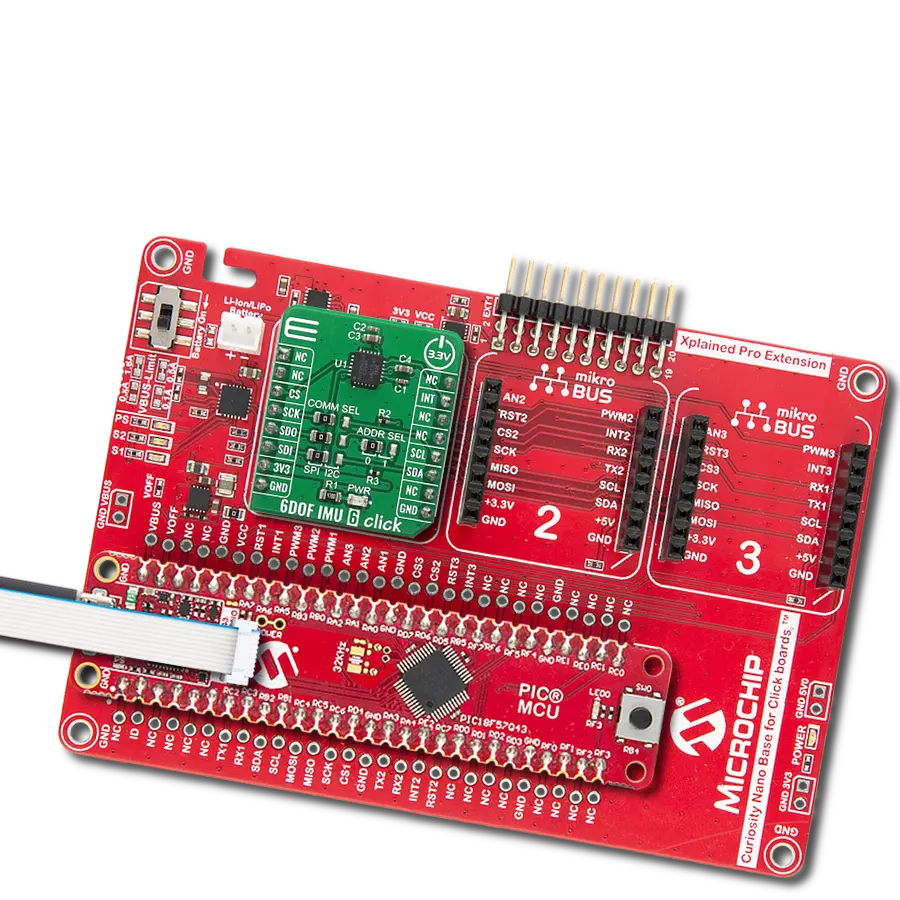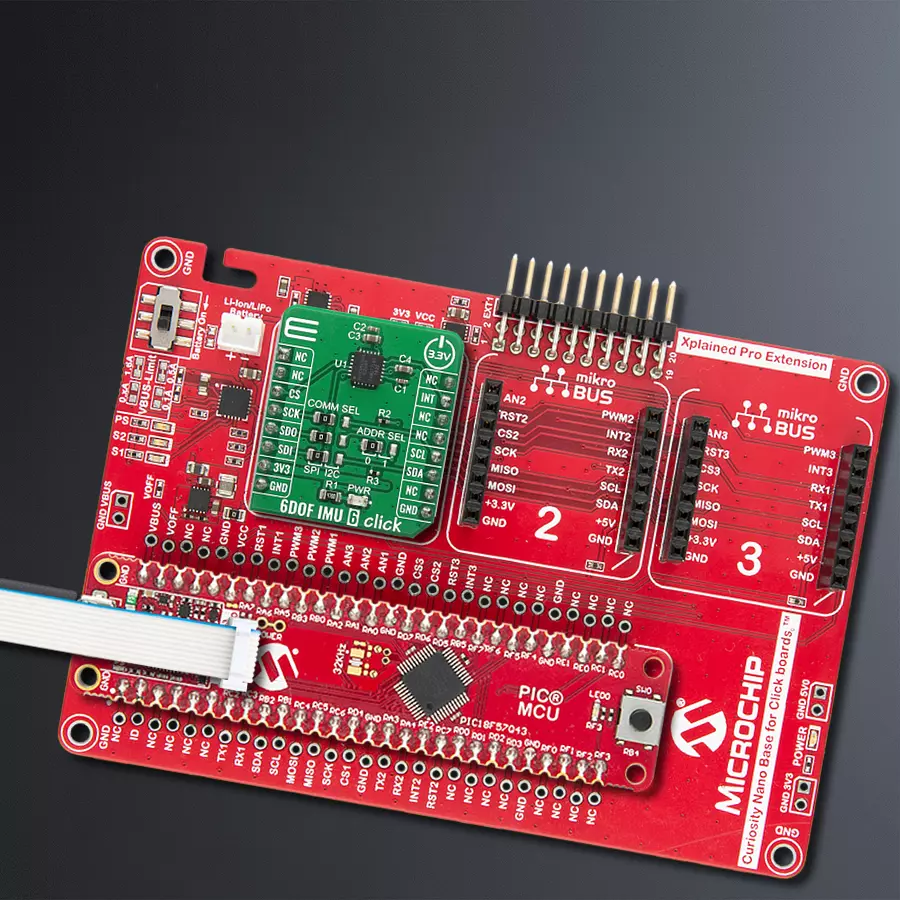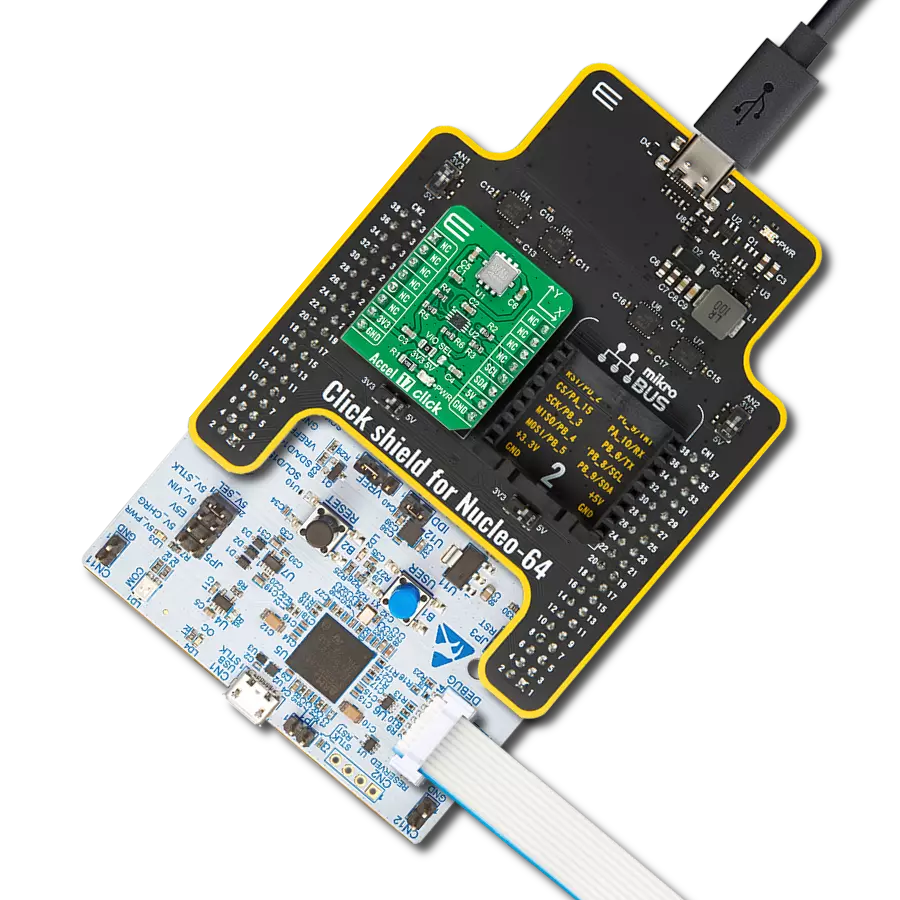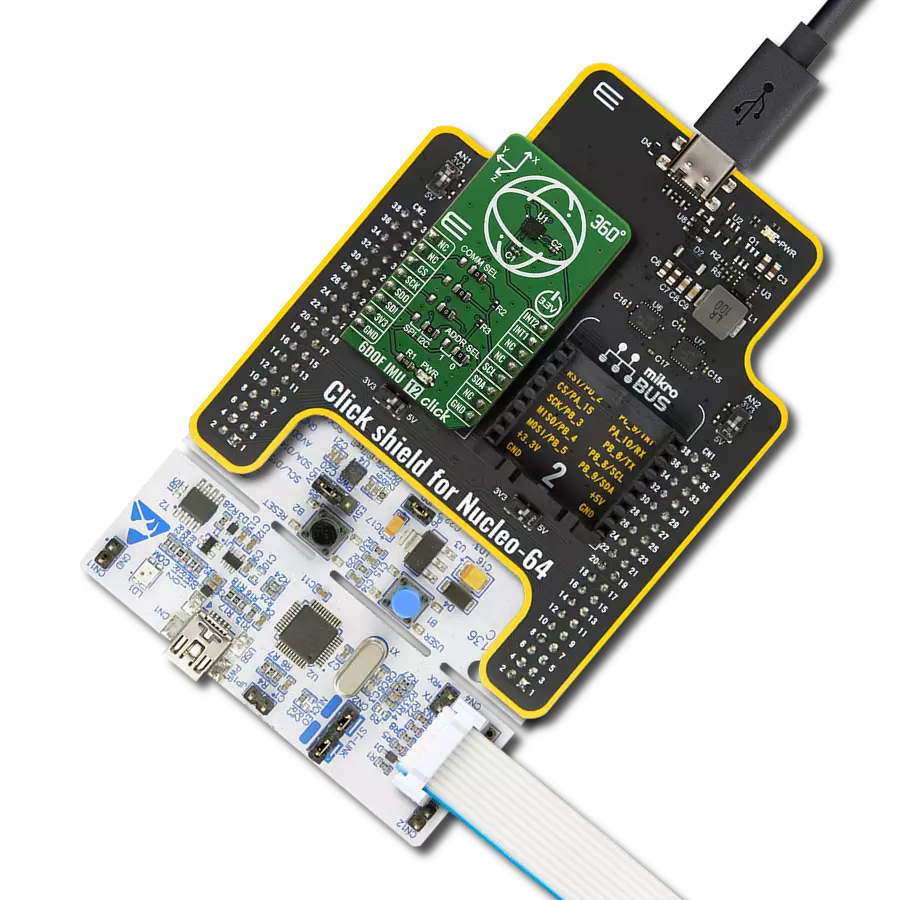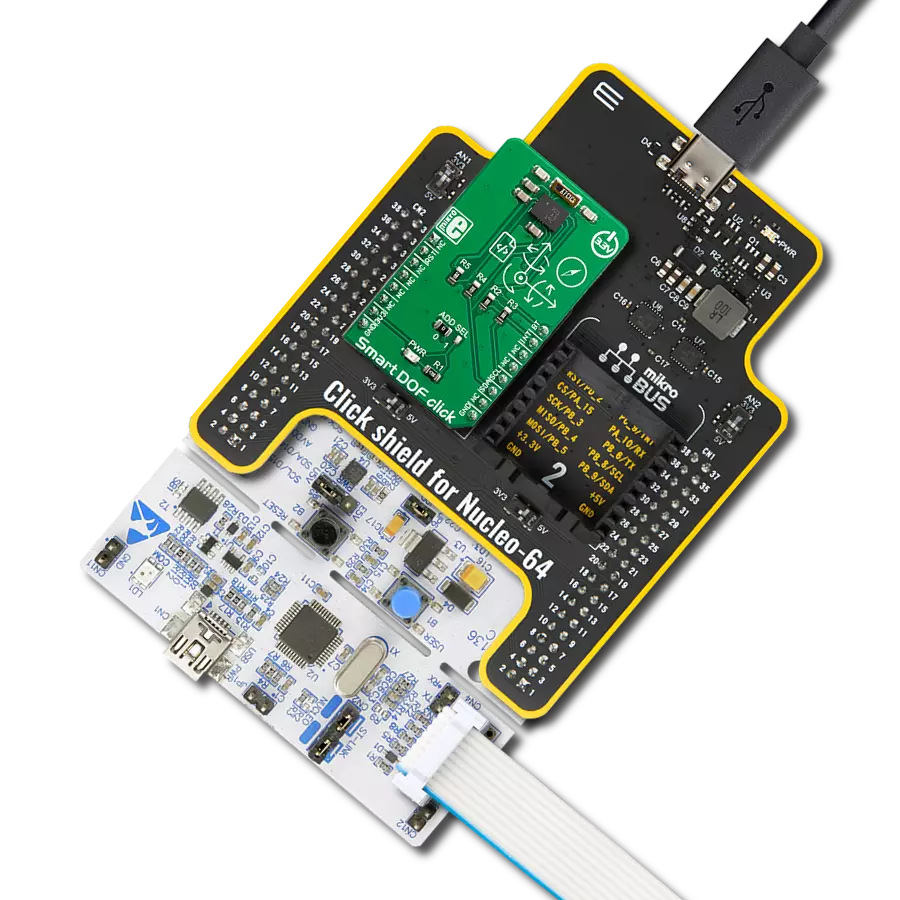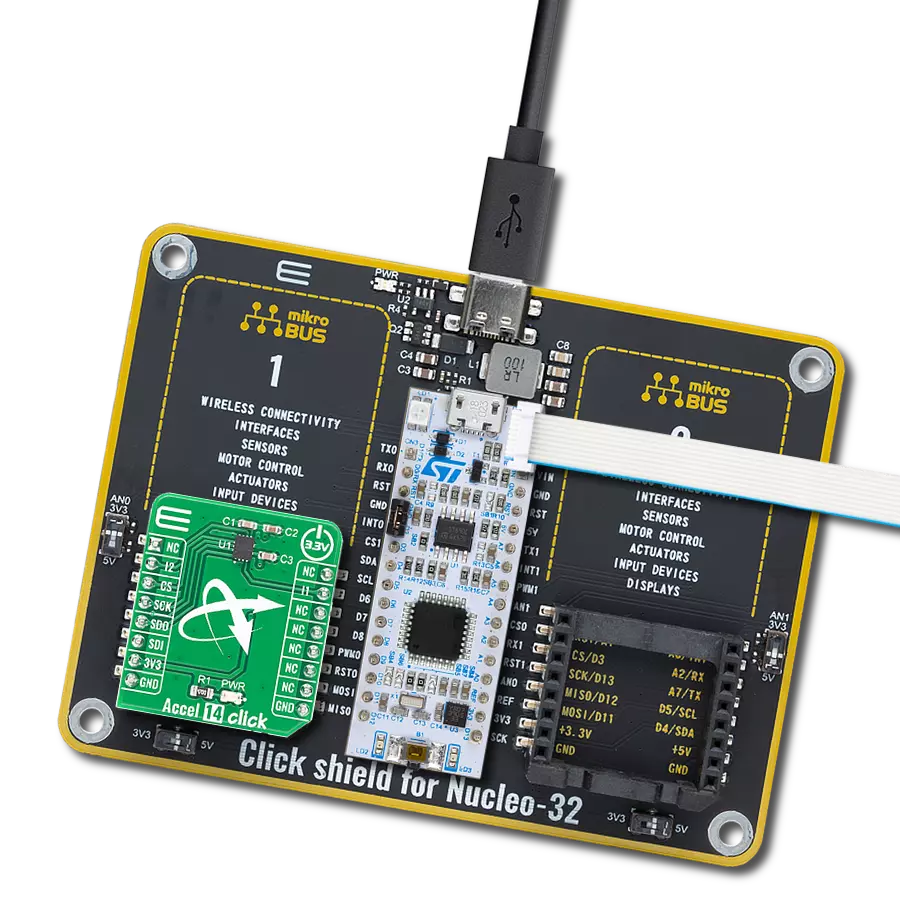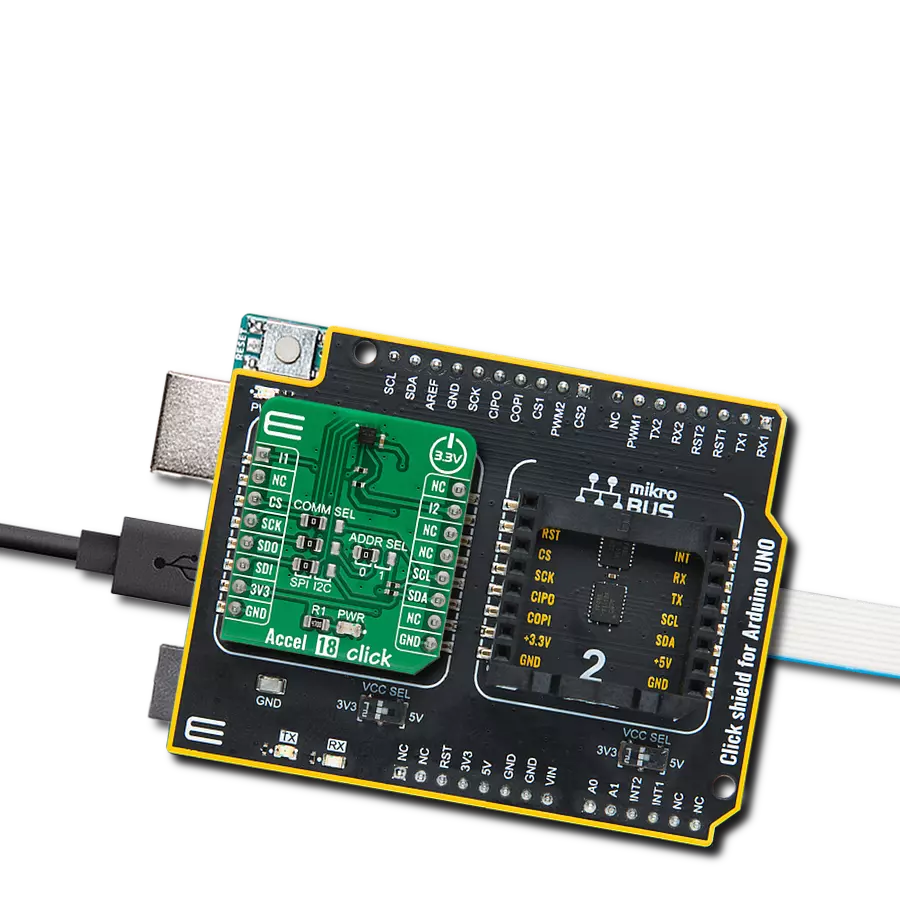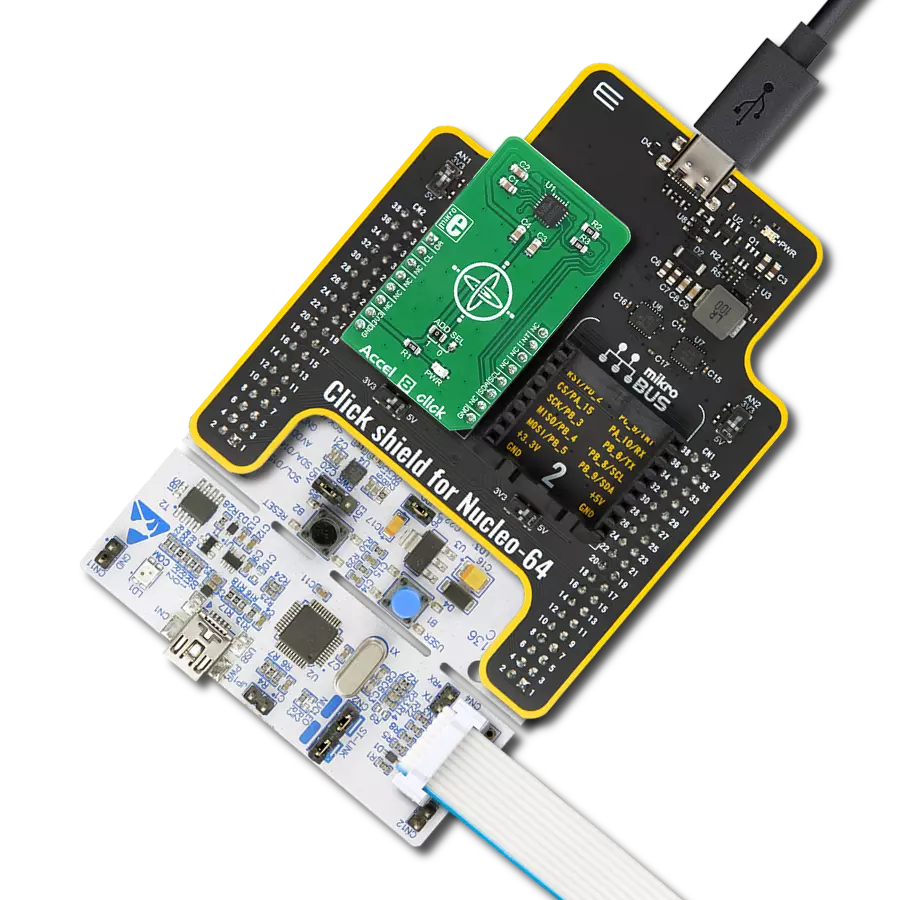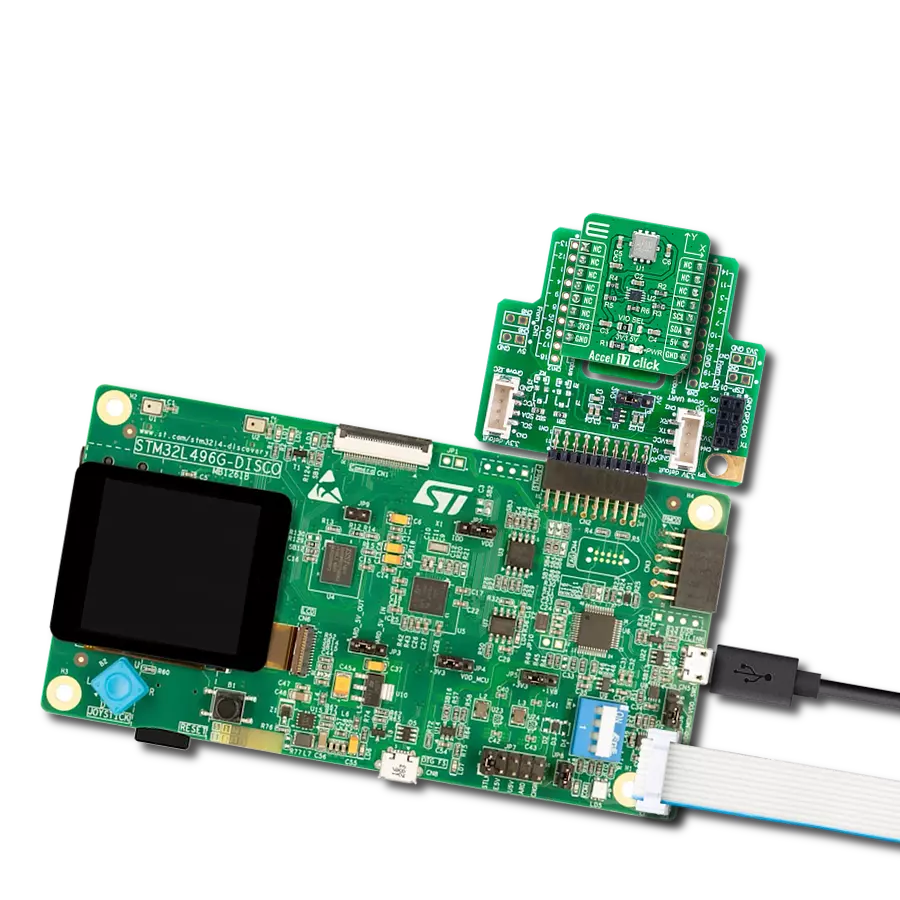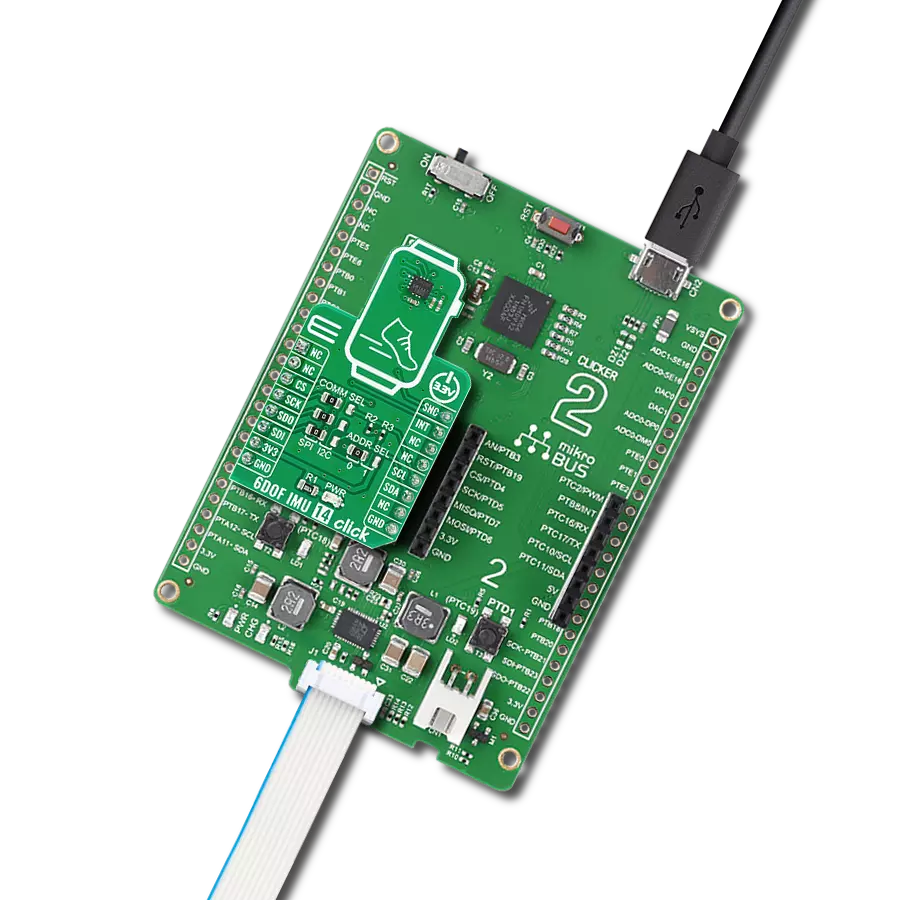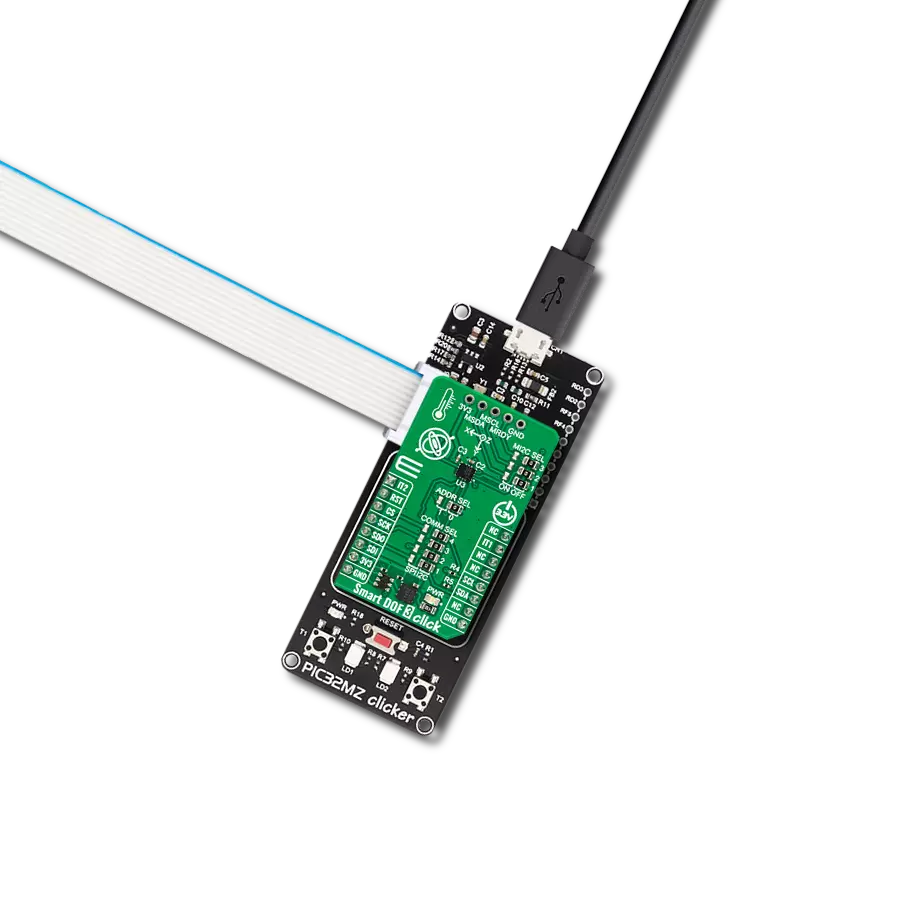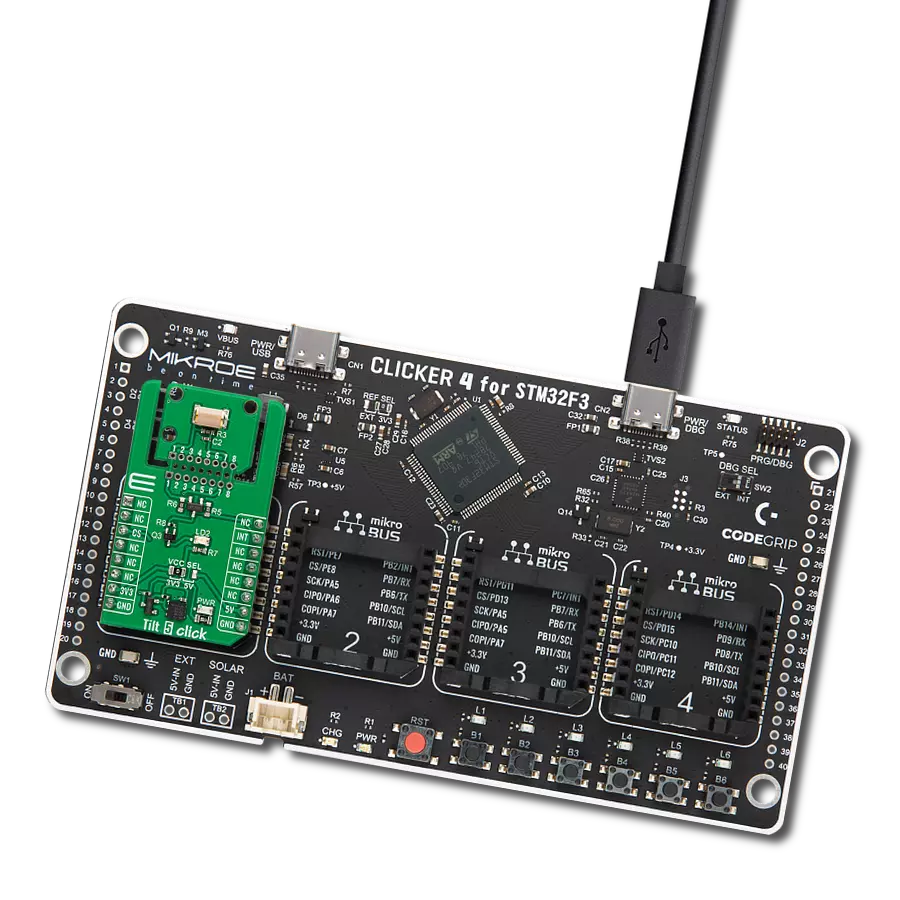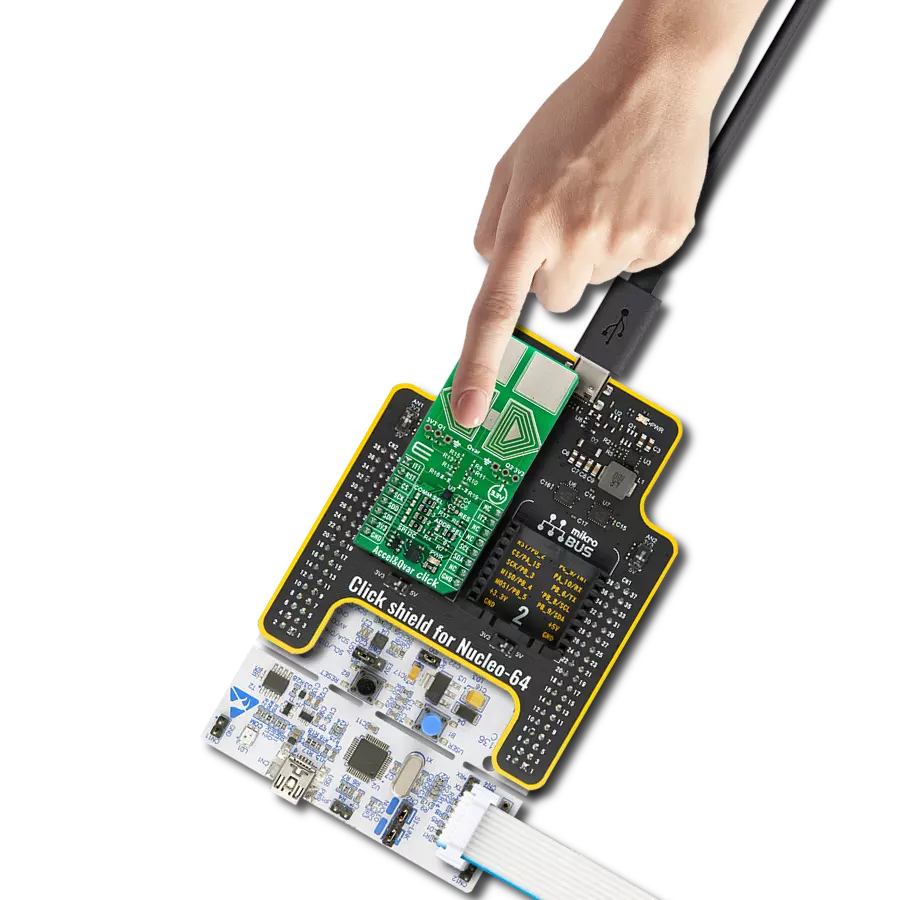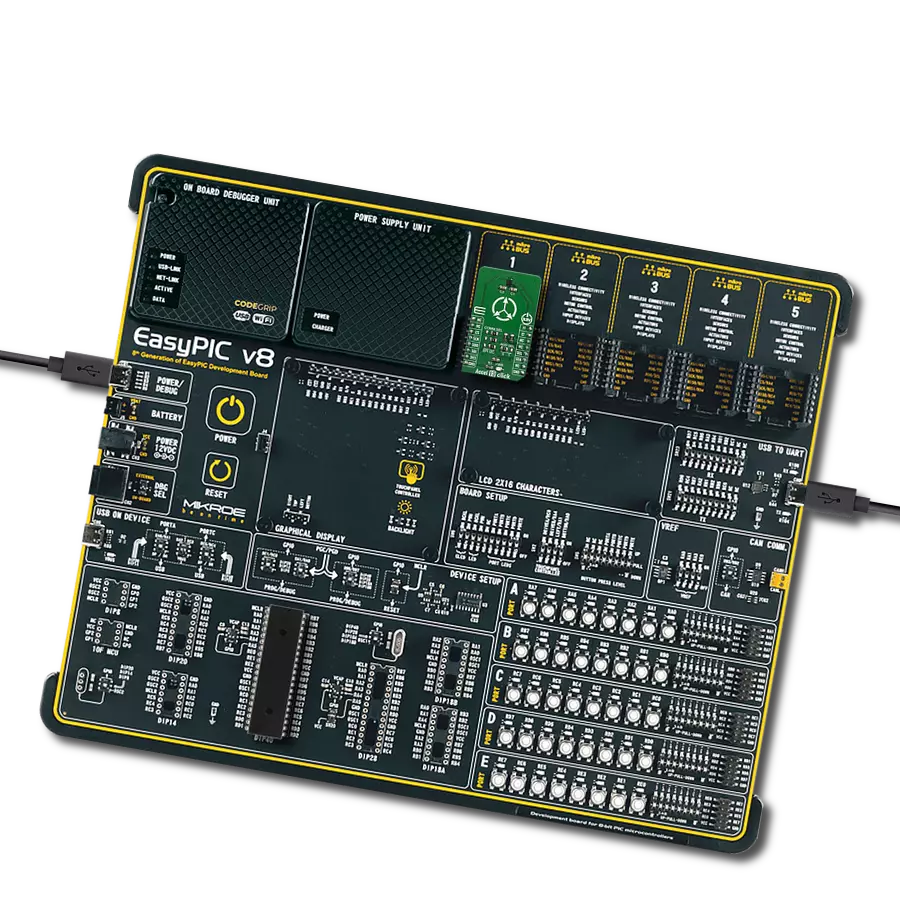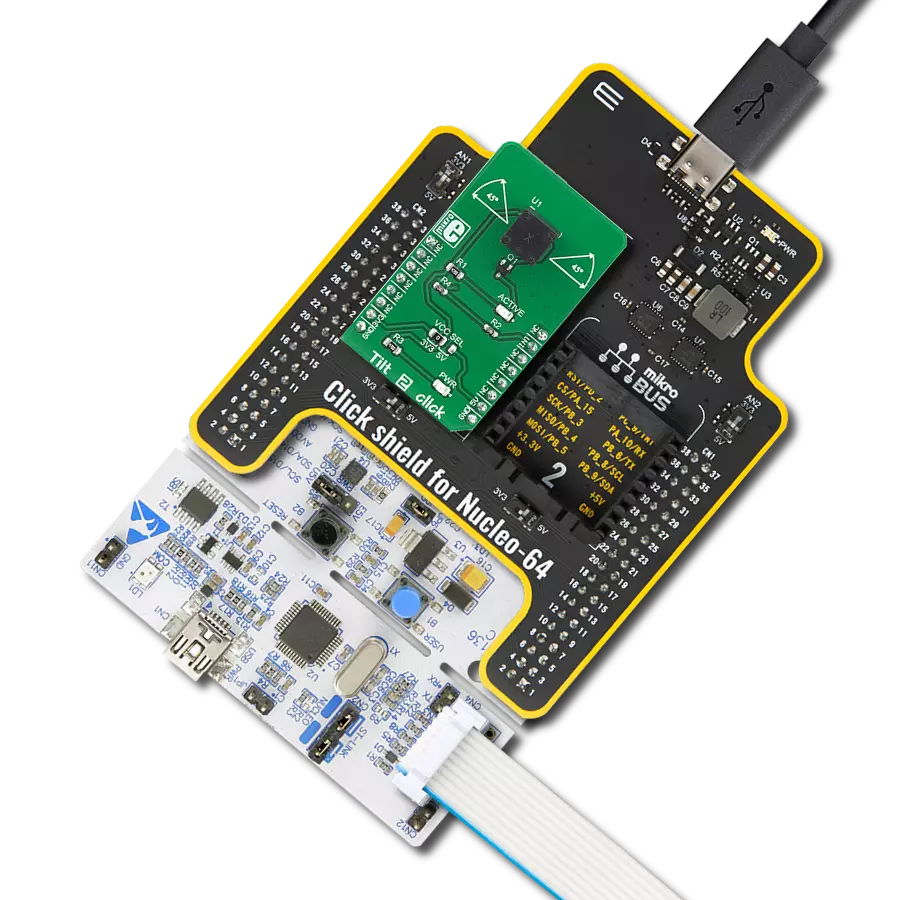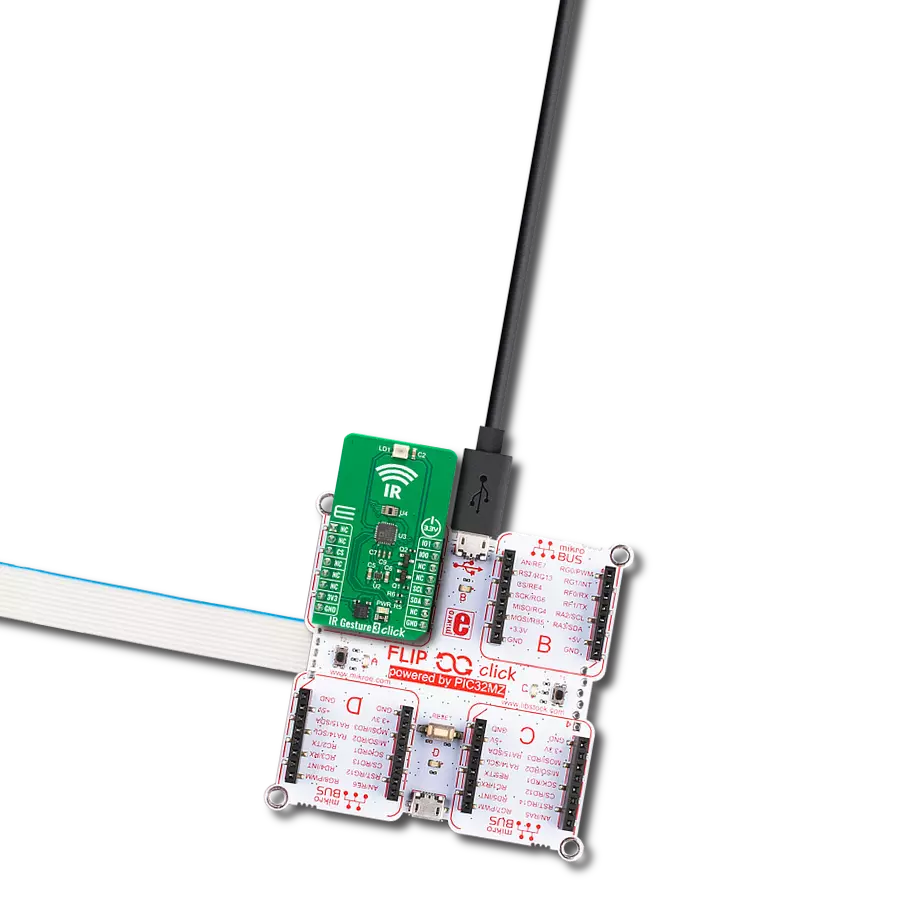Revolutionize robotics with improved motion awareness and control, enabling robots to perform tasks with precision and adaptability in various industries
A
A
Hardware Overview
How does it work?
6DOF IMU 6 Click is based on the ICM-20689, a 6-axis MotionTracking device that combines a 3-axis gyroscope, a 3-axis accelerometer, and a Digital Motion Processor™ (DMP) from TDK InvenSense. It also features a 4 Kbyte FIFO that can lower the traffic on the serial bus interface, and reduce power consumption by allowing the system processor to burst read sensor data and then go into a low-power mode.The ICM-20689, with its 6-axis integration, on-chip DMP, and run-time calibration firmware, enables manufacturers to eliminate the costly and complex selection, qualification, and system level integration of discrete devices, guaranteeing optimal motion performance. The gyroscope has a programmable full-scale of ±250, ±500, ±1000, and
±2000 degrees/sec. The accelerometer has a user-programmable accelerometer full-scale range of ±2g, ±4g, ±8g, and ±16g. Factory-calibrated initial sensitivity of both sensors reduces production-line calibration requirements. Other industry-leading features include on-chip 16-bit ADCs, programmable digital filters, an embedded temperature sensor, and programmable interrupts. The device provides high robustness by supporting 10,000g shock reliability. The device features I2C and SPI serial interfaces, wide operating voltage range (VDD) and separate digital IO supply (VDDIO) from 1.71V to 3.45V. Communication with all registers of the device can be performed using either I2C at 400kHz or SPI at 8MHz. 6DOF IMU 6 Click supports both SPI
and I2C communication interfaces, allowing it to be used with a wide range of different MCUs. The communication interface can be selected by moving SMD jumpers grouped under the COM SEL to an appropriate position (SPI or I2C). The slave I2C address can also be configured by an SMD jumper when the Click board™ is operated in the I2C mode. An SMD jumper labeled as ADD SEL is used to set the least significant bit (LSB) of the I2C address. Excellent choices for applications include mobile phones, tablets, drones, handset and portable gaming, motion-based game controllers, wearable sensors for health, fitness and sports and 3D remote controls for internet-connected DTVs and set-top boxes and 3D mice.
Features overview
Development board
PIC18F57Q43 Curiosity Nano evaluation kit is a cutting-edge hardware platform designed to evaluate microcontrollers within the PIC18-Q43 family. Central to its design is the inclusion of the powerful PIC18F57Q43 microcontroller (MCU), offering advanced functionalities and robust performance. Key features of this evaluation kit include a yellow user LED and a responsive
mechanical user switch, providing seamless interaction and testing. The provision for a 32.768kHz crystal footprint ensures precision timing capabilities. With an onboard debugger boasting a green power and status LED, programming and debugging become intuitive and efficient. Further enhancing its utility is the Virtual serial port (CDC) and a debug GPIO channel (DGI
GPIO), offering extensive connectivity options. Powered via USB, this kit boasts an adjustable target voltage feature facilitated by the MIC5353 LDO regulator, ensuring stable operation with an output voltage ranging from 1.8V to 5.1V, with a maximum output current of 500mA, subject to ambient temperature and voltage constraints.
Microcontroller Overview
MCU Card / MCU

Architecture
PIC
MCU Memory (KB)
128
Silicon Vendor
Microchip
Pin count
48
RAM (Bytes)
8196
You complete me!
Accessories
Curiosity Nano Base for Click boards is a versatile hardware extension platform created to streamline the integration between Curiosity Nano kits and extension boards, tailored explicitly for the mikroBUS™-standardized Click boards and Xplained Pro extension boards. This innovative base board (shield) offers seamless connectivity and expansion possibilities, simplifying experimentation and development. Key features include USB power compatibility from the Curiosity Nano kit, alongside an alternative external power input option for enhanced flexibility. The onboard Li-Ion/LiPo charger and management circuit ensure smooth operation for battery-powered applications, simplifying usage and management. Moreover, the base incorporates a fixed 3.3V PSU dedicated to target and mikroBUS™ power rails, alongside a fixed 5.0V boost converter catering to 5V power rails of mikroBUS™ sockets, providing stable power delivery for various connected devices.
Used MCU Pins
mikroBUS™ mapper
Take a closer look
Click board™ Schematic

Step by step
Project assembly
Software Support
Library Description
This library contains API for 6DOF IMU 6 Click driver.
Key functions:
c6dofimu6_default_cfg- This function executes default configuration for 6DOF IMU 6 clickc6dofimu6_angular_rate- Function is used to calculate angular ratec6dofimu6_acceleration_rate- Function is used to calculate acceleration rate
Open Source
Code example
The complete application code and a ready-to-use project are available through the NECTO Studio Package Manager for direct installation in the NECTO Studio. The application code can also be found on the MIKROE GitHub account.
/*!
* \file
* \brief 6DofImu6 Click example
*
* # Description
* 6DOF IMU 6 Click features a 6-axis MotionTracking device that combines a 3-axis gyroscope,
* a 3-axis accelerometer, and a Digital Motion Processor.
*
* The demo application is composed of two sections :
*
* ## Application Init
* Initalizes SPI and I2C drivers, performs safety check, applies default
* settings and writes an initial log.
*
* ## Application Task
* Demonstrates the use of 6DOF IMU 6 Click board by reading angular rate, acceleration rate
* and displaying data to USB UART.
*
* \author MikroE Team
*
*/
// ------------------------------------------------------------------- INCLUDES
#include "board.h"
#include "log.h"
#include "c6dofimu6.h"
// ------------------------------------------------------------------ VARIABLES
static c6dofimu6_t c6dofimu6;
static log_t logger;
static uint8_t id_val;
static float x_accel;
static float y_accel;
static float z_accel;
static float x_gyro;
static float y_gyro;
static float z_gyro;
// ------------------------------------------------------ APPLICATION FUNCTIONS
void application_init ( void )
{
log_cfg_t log_cfg;
c6dofimu6_cfg_t cfg;
/**
* Logger initialization.
* Default baud rate: 115200
* Default log level: LOG_LEVEL_DEBUG
* @note If USB_UART_RX and USB_UART_TX
* are defined as HAL_PIN_NC, you will
* need to define them manually for log to work.
* See @b LOG_MAP_USB_UART macro definition for detailed explanation.
*/
LOG_MAP_USB_UART( log_cfg );
log_init( &logger, &log_cfg );
log_info(&logger, "---- Application Init ----");
// Click initialization.
c6dofimu6_cfg_setup( &cfg );
C6DOFIMU6_MAP_MIKROBUS( cfg, MIKROBUS_1 );
c6dofimu6_init( &c6dofimu6, &cfg );
Delay_ms ( 100 );
c6dofimu6_generic_read ( &c6dofimu6, C6DOFIMU6_WHO_AM_I, &id_val, 1 );
if ( id_val == C6DOFIMU6_WHO_AM_I_VAL )
{
log_printf( &logger, "-------------------------\r\n" );
log_printf( &logger, " 6DOF IMU 6 Click \r\n" );
log_printf( &logger, "-------------------------\r\n" );
c6dofimu6_power ( &c6dofimu6, C6DOFIMU6_POWER_ON );
}
else
{
log_printf( &logger, "-------------------------\r\n" );
log_printf( &logger, " FATAL ERROR!!! \r\n" );
log_printf( &logger, "-------------------------\r\n" );
for ( ; ; );
}
c6dofimu6_default_cfg( &c6dofimu6 );
log_printf( &logger, " ---Initialised--- \r\n" );
log_printf( &logger, "-------------------------\r\n" );
Delay_ms ( 100 );
}
void application_task ( void )
{
c6dofimu6_angular_rate( &c6dofimu6, &x_gyro, &y_gyro, &z_gyro );
log_printf( &logger, "Gyro \r\n" );
log_printf( &logger, "X-axis: %.2f\r\n", x_gyro );
log_printf( &logger, "Y-axis: %.2f\r\n", y_gyro );
log_printf( &logger, "Z-axis: %.2f\r\n", z_gyro );
log_printf( &logger, "---------------------\r\n" );
c6dofimu6_acceleration_rate( &c6dofimu6, &x_accel, &y_accel, &z_accel );
log_printf( &logger, "Accel \r\n" );
log_printf( &logger, "X-axis: %.2f\r\n", x_accel );
log_printf( &logger, "Y-axis: %.2f\r\n", y_accel );
log_printf( &logger, "Z-axis: %.2f\r\n", z_accel );
log_printf( &logger, "---------------------\r\n\r\n" );
Delay_ms ( 1000 );
}
int main ( void )
{
/* Do not remove this line or clock might not be set correctly. */
#ifdef PREINIT_SUPPORTED
preinit();
#endif
application_init( );
for ( ; ; )
{
application_task( );
}
return 0;
}
// ------------------------------------------------------------------------ END
Additional Support
Resources
Category:Motion
